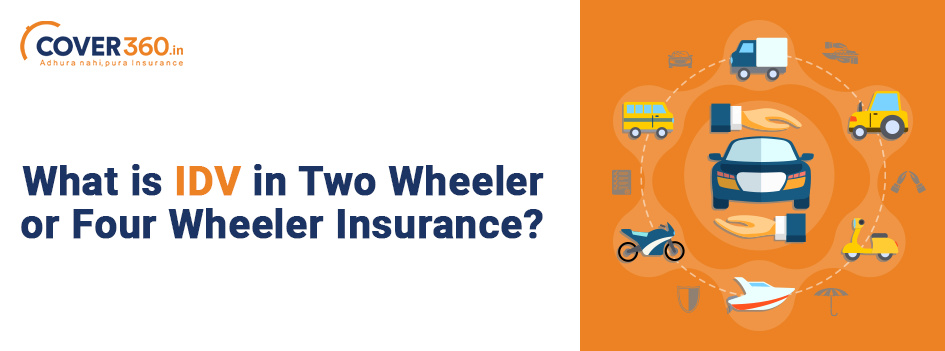Insured Declared Value, or IDV, is a crucial term in vehicle insurance, representing the maximum sum assured that an insurance company agrees to pay in the event of theft or total loss of the insured vehicle. It reflects the current market value of the vehicle, adjusted for depreciation based on its age.
You must have read this term in your vehicle insurance policy and wonder what is IDV how it affects your policy.
Well, IDV is not only pivotal as it determines the maximum compensation you can claim, but it also impacts the premium amount you pay for your insurance. The higher the IDV, the higher the premium, and vice versa.
IDV is calculated by the following formula:
IDV=(Manufacturer’s Selling Price−Depreciation)+Cost of Accessories not included in Selling Price. the cost of road tax and registration charges are not part of IDV.
While the major aspect of IDV remains the same in two wheeler or the best four wheeler insurance, it is important to understand the factors that affect the IDV in both. so we will discuss only IDV which is common criteria for both
IDV in Two Wheeler Insurance – Factors that Affect
In Four Wheeler and two Wheeler Insurance also, the Insured Declared Value (IDV) is crucial as it determines the maximum claim amount in case of theft or total loss of the vehicle. Several factors affect the IDV, including:
- Age and Depreciation: The vehicle’s age significantly impacts its depreciation, which in turn affects the IDV.
- Manufacturer’s Selling Price: The base price from which the depreciation is calculated to determine the IDV.
- Accessories: The cost of additional accessories not included in the original selling price can affect the IDV.
- Location: The geographical location may influence the IDV due to local regulations and market conditions.
- Vehicle Condition: Well-maintained vehicles may have a higher IDV compared to those in poor condition.
As mentioned earlier, the core concept of IDV remains the same for both two-wheeler and four-wheeler insurance. However, the depreciation schedule or the rate of depreciation might slightly vary between them depending on the insurer and local regulations.
Additionally, the higher initial cost and longer lifespan of four-wheelers might lead to a different depreciation pattern compared to two-wheelers. It’s advisable to check with the insurance provider for the precise depreciation schedule and how IDV is calculated for each type of vehicle.
Now, when it comes to choosing the best insurance for your two-wheeler or four-wheeler, multiple platforms provide lists and comparisons of the best insurance plans and companies for 2024.
This comprehensive coverage of IDV and its implication on vehicle insurance, along with recommendations for the best insurance providers, should empower you to make informed decisions regarding your vehicle insurance in 2024.
You can refer to Cover 360’s listings for four-wheeler and two-wheeler insurance policies to compare and select the best motor insurance that safeguards you and your vehicle.
